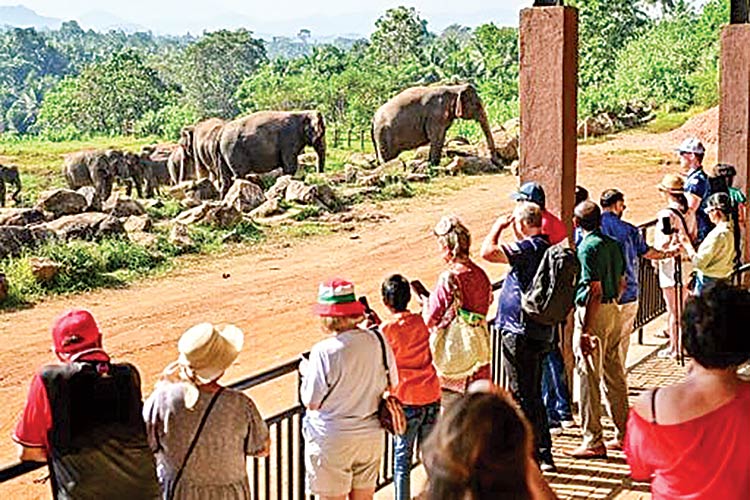Life style
Confessions of a global gypsy
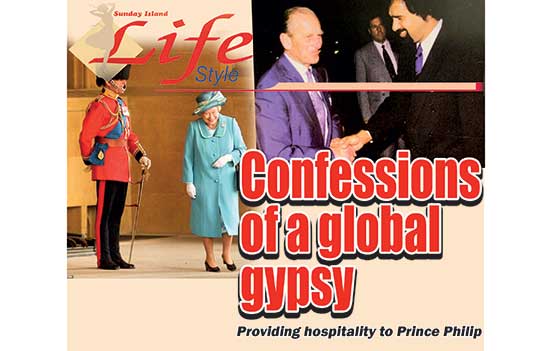
Providing hospitality to Prince Philip
by Dr. Chandana
(Chandi) Jayawardena DPhil
President – Chandi J. Associates Inc.
Consulting, Canada Founder & Administrator – Global Hospitality Forum
Today, instead of chronologically narrating another episode of the story of my career, I will write about a customer I met and provided hospitality services twice, in the UK in 1984 and in Jamaica in 1998. Philip Schleswig-Holstein-Sonderburg-Glücksburg was born nearly 100 years ago (on 10 June 1921) in Greece into Greek and Danish royal families. He had a non-English, but a rich continental European mix – German, Greek, Danish, Hungarian, French, Swiss, Bohemian, Lithuanian, Russian, Swedish, Belgian, and Dutch. His family was exiled from Greece when he was an infant. After being educated in France, Germany and the United Kingdom (UK), he joined the British Royal Navy as an officer in 1939. He became a British subject in 1947, changed his family name to Mountbatten and married Princess Elizabeth, who became the Queen of the United Kingdom in 1952. Having made a British Prince in 1957, and over the years many other titles and honours were bestowed to him, but I will refer to him as Prince Philip, who was unique in that he was the longest-lived male member ever in the British royal family.
Two VIP visitors from UK
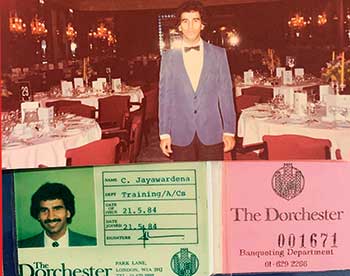 From 1995 to 1998 I was the General Manager of the largest hotel in the capital city of Jamaica – Kingston. Le Meridien Jamaica Pegasus Hotel (Pegasus) was operated by the largest British hotel company at that time – Forte PLC, and I represented that company in Jamaica. Along with two sister hotels – Guyana Pegasus Hotel and Pegasus Reef Hotel in Sri Lanka, Jamaica Pegasus was planned and developed in late 1960s and early 1970s by British Overseas Airways Corporation or BOAC (now British Airways) and Trust House Forte (later Forte PLC). Because of the hotel’s British connections, we had a large percentage of British travellers coming to Kingston staying at the Pegasus. Thirty rooms of the Pegasus were booked on back-to-back basis for the crews of British Airways over many years. The English cricket team stayed at the Pegasus, during all their matches played in Jamaica.
From 1995 to 1998 I was the General Manager of the largest hotel in the capital city of Jamaica – Kingston. Le Meridien Jamaica Pegasus Hotel (Pegasus) was operated by the largest British hotel company at that time – Forte PLC, and I represented that company in Jamaica. Along with two sister hotels – Guyana Pegasus Hotel and Pegasus Reef Hotel in Sri Lanka, Jamaica Pegasus was planned and developed in late 1960s and early 1970s by British Overseas Airways Corporation or BOAC (now British Airways) and Trust House Forte (later Forte PLC). Because of the hotel’s British connections, we had a large percentage of British travellers coming to Kingston staying at the Pegasus. Thirty rooms of the Pegasus were booked on back-to-back basis for the crews of British Airways over many years. The English cricket team stayed at the Pegasus, during all their matches played in Jamaica.
The British High Commissioner in Jamaica at that time had become a friend of mine. One day in early 1998, while attending a private party at my apartment at the Pegasus with his wife, the High Commissioner gave me heads up about two separate visits by two VIPs from the UK – Former (1990-1997) Prime Minister John Major (now Sir John) and Prince Philip. I lived in the UK when John Major became the surprise successor of Margret Thatcher in 1990, after the famous cabinet revolt. I was glued to the TV every evening in my London home, wondering how a person with such humble beginnings became the most powerful person in the UK. I became an admirer of John Major, and was excited about the opportunity to meet and greet him. On the other hand, having read and heard about Prince Philip’s greatest legacy (apart from his marathon marriage to Elizabeth II) – a lifetime of controversial, cringeworthy and sometimes outright appalling comments or insensitive jokes, I was not an admirer of Prince Philip. However, I was happy that he would be staying at the Pegasus for two days.
Arrival in Jamaica
Prince Philip arrived at the Pegasus in the evening of 23rd March 1998. He was accompanied by the British High Commissioner and a male travelling companion, who had a variety of roles such as Secretary, Butler and Valet. Given his reputation, my expectations were not high. However, I was pleasantly surprised about the jovial mood and politeness of Prince Philip that evening. He looked fit and athletic, and did not look 76, which was his age at that time. For someone who just arrived in the Caribbean after a cross-Atlantic flight, he appeared to be fresh. His suite and the adjoining room for his Secretary were on the 15th floor furthest from the elevators. While walking towards his suite he told me jokingly, “Hotels forget that I am an old man when they always allocate me a suite which requires the longest walk from the lift.” When I apologised, he said: “That is alright, I need the exercise.”
Chat about the past
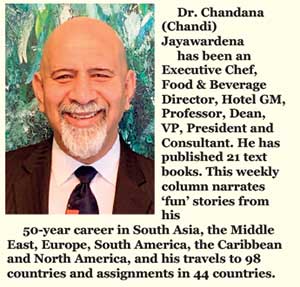 The next day, during his breakfast at the suite, I met Prince Philip again. I checked how his first night at the Pegasus was, and he was happy with all arrangements. He looked well rested. We chatted briefly about the weather and his previous visits to Jamaica, as well as about his stay with Queen Elizabeth at Guyana Pegasus Hotel a few years ago and visits to Sri Lanka. Then I walked with him, on his way out to a meeting scheduled at the British High Commission. While walking he surprised me by asking: “have we met before?” Assuming that this is his dry sense of humour he is famous for, I replied, “Yes, Your Royal Highness, we met last evening.” He laughed and said, “No, no, I mean before, years ago. I remember your face and your afro hair style.” I then said, “I served you once at the Dorchester Hotel, but that was 14 years ago, when I was a Banquet Waiter, I cannot imagine you remembering all Waiters who served you at numerous royal banquets, Sir.” Prince Philip looked straight at my eyes for a few seconds and said, “I think that I remember you from the Dorchester.”
The next day, during his breakfast at the suite, I met Prince Philip again. I checked how his first night at the Pegasus was, and he was happy with all arrangements. He looked well rested. We chatted briefly about the weather and his previous visits to Jamaica, as well as about his stay with Queen Elizabeth at Guyana Pegasus Hotel a few years ago and visits to Sri Lanka. Then I walked with him, on his way out to a meeting scheduled at the British High Commission. While walking he surprised me by asking: “have we met before?” Assuming that this is his dry sense of humour he is famous for, I replied, “Yes, Your Royal Highness, we met last evening.” He laughed and said, “No, no, I mean before, years ago. I remember your face and your afro hair style.” I then said, “I served you once at the Dorchester Hotel, but that was 14 years ago, when I was a Banquet Waiter, I cannot imagine you remembering all Waiters who served you at numerous royal banquets, Sir.” Prince Philip looked straight at my eyes for a few seconds and said, “I think that I remember you from the Dorchester.”
A royal banquet at the Dorchester, London in 1984
When I was a graduate student at the University of Surrey, UK in 1983 and 1984, to make sufficient money to pay the rent, I worked at the Dorchester in Park Lane, London, as a part-time Banquet Waiter. Although it was the best hotel in the UK at that time, most Waiters who served in banquets were part-time employees. Traditionally most royal banquets in London were held at the Buckingham Palace or at a historic hotel with long-standing connections with royalty that have led to it sometimes being referred to as an annexe to the Buckingham Palace – The Claridge’s in Mayfair, London. In early 1984, after many efforts by the top management team, the Dorchester secured a prestigious booking for the first royal banquet ever to be held at the Dorchester, since its opening in 1931.
As this banquet would enhance the image of the Dorchester, the management decided to re-train the full banquet service team of full-time and part-time employees. It was a two week fully-paid special training. We were told by the Banquet Manager that the five waiters who perform the best in the practical test and the exam at the end of the special training session, will be given the opportunity of serving the 27 VIPs who would sit at the head table. These VIPs included the Queen and Prince Philip, King of Bahrain, The Lord Chancellor of the UK and the Prime Minister of the UK (Margret Thatcher). Thanks to my practical training I received by German and Swiss food and beverage service experts at the Ceylon Hotel School in the early 1970s, I managed to do well at this training session and become one of the best five waiters. I was chosen to serve the Queen and Prince Philip and the King of Bahrain at the royal banquet held on 12th April 1984. I was one of the two non-white waiters among a service brigade of 50 who worked at that royal banquet. Perhaps that may be a reason for Prince Philip to remember me after 14 long years.
A fundraiser private dinner in Kingston in 1998
In 1998, the Chairman of the Pegasus Board and the individual shareholder with the largest percentage of shares, was Mr. John Issa. He was also the Chairman of his family-owned resort chain – SuperClubs. Mr. Issa’s family were the pioneers of tourism in Jamaica for a few generations. His wife, son and twin daughters were all well-qualified and held senior positions within the family business. I was very close to the Issa family. Towards the end of 1997, Mr. Issa had a chat with me and said that he and his family will need two suites at the Pegasus for six months, as their beautiful house in a posh area of Kingston will be fully renovated to host an important event. As their house was already well-appointed and well-maintained, to me it sounded strange, but I did not ask too many questions from the Chairman of the Board.
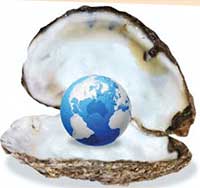 A few days before the visit of Prince Philip to Jamaica, the Issa family returned to their upgraded house. At that point Mr. Issa informed me that his family would be hosting Prince Philip for a private dinner in their house, the day after Prince Philip’s arrival. As it was a fundraiser event the invitees for the dinner were rich and famous Jamaicans. Mr. Issa disliked wearing the tie and jacket and therefore, the dress code was informal. A six-course menu with matching wines were planned. Pegasus was asked to look after some of the logistics, while SuperClubs looked after catering.
A few days before the visit of Prince Philip to Jamaica, the Issa family returned to their upgraded house. At that point Mr. Issa informed me that his family would be hosting Prince Philip for a private dinner in their house, the day after Prince Philip’s arrival. As it was a fundraiser event the invitees for the dinner were rich and famous Jamaicans. Mr. Issa disliked wearing the tie and jacket and therefore, the dress code was informal. A six-course menu with matching wines were planned. Pegasus was asked to look after some of the logistics, while SuperClubs looked after catering.
The event was a success in terms of quality, satisfaction and fundraising. It was like musical chairs, when those invitees who sat next to and in front of Prince Philip, were rotated from course to course. After the event was over, jokingly I asked Mr. Issa: “Would there be an opportunity for me to address you as SIR JOHN in the near future?” He laughed and said: “Chandi, I need to do much more than one fundraiser to earn a title such as that”. I think that I read Mr. Issa’s mind, correctly.
Goodbye
The next morning, I handled Prince Philip’s departure from Pegasus. When he saw me at his suite, he asked, “You, again?” By then I have gotten used to his dry sense of humour. I think that he joked often with an intention to put people at ease, but at times was misunderstood as being sarcastic. After a firm hand shake and exchange of smiles, I said goodbye and bon voyage to Prince Philip.
Years later when I watched four seasons of the award-winning Netflix series ‘The Crown’ with my wife, I realized how complex and at times, difficult it was for him to play a supportive ceremonial role for 69 years from the time his wife became the Queen of the UK and the Commonwealth in 1952. He was fully dedicated to the institution and had a deep sense of duty, perhaps stemmed from his naval officer training and distinguished military career. He was a reliable husband for 73 long years.
Prince Philip served as a patron, president, or member of over 780 organisations, and his key legacy will be his work as the Chairman of the Duke of Edinburgh’s Award, a self-improvement program for young people aged 14 to 24 founded by Prince Philip in the UK in 1956 and expanded to 144 nations, over the decades. He was a good man. “Goodnight Sweet Prince!”
chandij@sympatico.ca
Life style
Sri Lanka’s first elephant orphanage celebrates 50 years
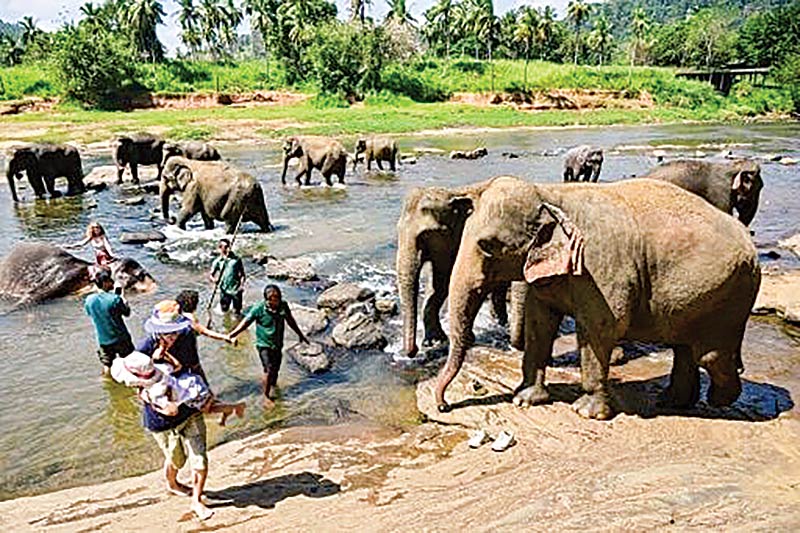
By Amal Jayasinghe
Pics by Ishara Kodikara
Sri Lanka’s main elephant orphanage marked its 50th anniversary on Sunday february 16 with a fruit feast for the 68 jumbos at the showpiece centre, reputedly the world’s first care home for destitute pachyderms. The Pinnawala Elephant Orphanage lavished pineapples, bananas, melons and cucumbers on its residents to celebrate the anniversary of their home, which is a major tourist attraction.
A few officials and tourists invited to the low-key celebration were served milk rice and traditional sweets while four generations of elephants born in captivity frolicked in the nearby Maha Oya river.
“The first birth at this orphanage was in 1984, and since then, there have been a total of 76,” said chief curator Sanjaya Ratnayake, as the elephants returned from their daily river bath.
“This has been a successful breeding programme, and today we have four generations of elephants here, with the youngest 18 months old and the oldest 70 years,” he told AFP.
The orphanage recorded its first twin birth in August 2021 — a rarity among Asian elephants — and both calves are doing well.
Two years before the orphanage was formally established as a government institution in February 1975, five orphaned elephants were cared for at a smaller facility in the southern resort town of Bentota.
“Since the orphanage was set up at Pinnawala in 1975, in a coconut grove, the animals have had more space to roam, with good weather and plenty of food available in the surrounding area,” Ratnayake said.
The home requires 14,500 kilos of coconut and palm tree leaves, along with other foliage, to satisfy the elephants’ voracious appetites.
It also buys tonnes of fruit and milk for the younger calves, who are adored by the foreign and local visitors to the orphanage, located about 90 kilometres (56 miles) east of the capital Colombo.
It is also a major revenue generator for the state, earning millions of dollars a year in entrance fees. Visitors can watch the elephants from a distance or get up close and help scrub them during bath times.
– Tragic toll –
The facility lacked running water and electricity at its inception but things improved as it gained international fame in subsequent years, said retired senior mahout K.G. Sumanabanda, 65.
“I was also fortunate to be present when we had the first birth in captivity,” Sumanabanda told AFP, visiting the home for the jubilee celebrations.
During his career spanning over three decades as a traditional elephant keeper, he trained more than 60 other mahouts and is still consulted by temples and individuals who own domesticated elephants.
Twenty years ago, Sri Lankan authorities opened another elephant home south of the island to care for orphaned, abandoned or injured elephants and later return them back to the wild.
While Pinnawala is seen by many as a success, Sri Lanka is also facing a major human-elephant conflict in areas bordering traditional wildlife sanctuaries.
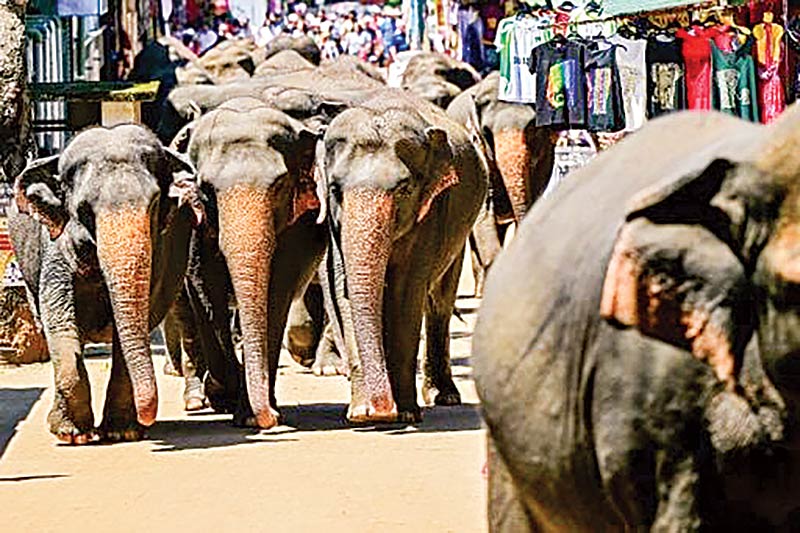
Elephants return to Sri Lanka’s Pinnawala Elephant Orphanage after taking their daily bath in a river
Deputy Minister of Environment Anton Jayakody told AFP on Sunday that 450 elephants and 150 people were killed in clashes in 2023, continuing an alarming trend of fatalities in the human-elephant conflict. The previous year saw 433 elephants and 145 people were killed.
Killing or harming elephants is a criminal offence in Sri Lanka, which has an estimated 7,000 wild elephants and where jumbos are considered a national treasure, partly due to their significance in Buddhist culture.
But the massacre continues as desperate farmers face the brunt of elephants raiding their crops and destroying livelihoods.
The minister was confident the new government could tackle the problem by preventing elephants from crossing into villages.
“We are planning to introduce multiple barriers—these may include electric fences, trenches, or other deterrents—to make it more difficult for wild elephants to stray into villages,” Jayakody told AFP.
Life style
Growing the Cultural Landscape with Suhanya Raffel
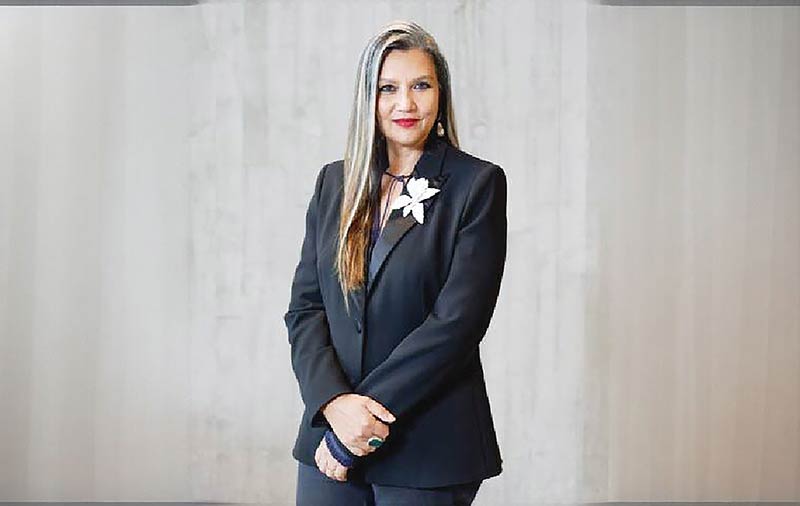
The Geoffrey Bawa Trust which was launched its 2025 is followed by Curatorial Conversations Series. Recently a presentation was made S by M+ Museum director and Geoffrey Bawa Trustee Suhanya Raffel. Speaking at the new Bawa Space on Horton Place, Raffel drew on extensive experience in the museum and art world to present insights and programming from the M+ Museum in Hong Kong. M+ is Asia’s first global museum of contemporary visual culture and presents itself as an intersection of visual art, design and architecture, and the moving image.
The evening presented an opportunity to hear from a leading expert in the museum field and discuss Sri Lanka’s present and future cultural landscape. It also highlighted the role of the Geoffrey Bawa Trust in conserving the legacy of the architect and his collaborators, and promoting contemporary art and design. “There are amazing artists, great designers, and reactive minds in Sri Lanka and the region,” Raffel said at a press event earlier in the afternoon. “There is opportunity in the aspiration to establish things, artists doing very important work, and the energy of individuals to try to make a difference.”
In part, this opportunity stems from the lack of established large-scale infrastructure to conserve Sri Lanka’s modern cultural legacy and support emerging artists. While there is the scope to shape the domestic art world and build institutions reflective of the local cultural community, there are also limitations and challenges in realising this potential.
Raffel spoke extensively about the need to build curatorial skills and knowledge and nurture cultural leaders in the region. Recognising this need, the Geoffrey Bawa Trust maintains public programmes, including exhibitions, residencies, tours, and lectures, to broaden public discourse and knowledge on the built environment and the arts in Sri Lanka and overseas. To fulfil curatorial needs and encourage growth in artistic and cultural institutions such as museums, the Trust employs a dedicated curatorial team and runs a robust internship and training programme. It is hoped that building this skill base will encourage others to explore similar career opportunities and support art, design, and architecture in the region. Sri Lankan visual arts over the past century have enjoyed wide international acclaim. “Sri Lanka is known globally for its creative work,” says Raffel, “it is culturally very strong.”
Geoffrey Bawa is a great example of this global influence. During his lifetime, the architect was very well-known in Sri Lanka and among contemporaries around the world. His structural, landscape, and furniture designs continue to guide and inspire. “It is very important for makers to be seen with their international peers,” Raffel explains. This cultural engagement on regional and international platforms is paramount for ensuring open dialogue and exchange. This means supporting collaborations, encouraging foreign markers to come to Sri Lanka, and exhibiting Sri Lankan work internationally.
The Trust is working to support this global dialogue by hosting installations by artists and makers from Sri Lanka and abroad, as was done in celebration of Geoffrey Bawa’s 100th birthday and again throughout the To Lunuganga programme from 2023-2024. The Trust took Geoffrey Bawa’s work to the world in 2024 with the travelling It is Essential to be There exhibition in Sri Lanka, India, and the United States.
The Trust is proud to be part of major professional international forums such as the International Confederation of Architectural Museums and the Committee for Modern and Contemporary Art Museums, both affiliated with the International Council of Museums. These platforms are vital for global knowledge sharing and advocacy. “We want more of these types of collaborations to happen both with the Geoffrey Bawa Trust, but also other arts and cultural institutions in Sri Lanka,” says Raffel.
In furthering this mission, the Trust is excited to present the new Bawa Space as the organisation’s public face and offer opportunities for the public to engage with the Trust’s work. Located in a recently restored Bawa-designed house from 1959, the Bawa Space doubles as the Geoffrey Bawa Trust headquarters and archives, as well as a new gallery and space for talks and events that will continue year-round.
Life style
Colombo Fashion Week 19-22 February: Two decades of creating the Fashion Eco-system in Sri Lanka

This year CFW will showcase a selection of Emerging Designers alongside established Sri Lankan designers. Adding international flavour will be well known designers from India Suket Dhir, Urvashi Kaur and Zaheer Abbas from Pakistan.
Colombo Fashion Week (CFW), presented by Mastercard, enters its 22nd year in 2025 with its Summer edition, marking another milestone in its journey as one of the four fashion weeks in Asia that have surpassed 2o years.Emerging Designer initiative of CFW this time remains one of its main pillars, providing an entry point for the next generation to pursue design-based entrepreneurship. This in line with the introduction of the Craft Fashion Fund this year is a testament to this commitment. The Craft Fashion Fund will select two winners, one who incorporates batik and another who utilizes crafts other than batik. This initiative passed 20 years.
Over the years, CFW has proven to be the backbone of Sri Lanka’s fashion design industry—its only voice—while creating a fashion ecosystem that provides support to new emerging designers entering the industry. Informally known as South Asian Fashion Week, it serves as a regional hub due to its geopolitical advantage. It is also one of the most significant fashion weeks in South Asia, having played a crucial role in revitalizing the country’s fashion design industry.
This year, Colombo Fashion Week has also expanded its international footprint since joining as a founding member of the newly created BRICS International Fashion Federation. This aligns with CFW’s ongoing mission to bridge diverse fashion markets and foster creative dialogue across continents. As part of this federation, CFW has signed a designer exchange program with BRICS, where a designer from a BRICS country will showcase their work at CFW, and a Sri Lankan designer will present their collection there. CFW continues to play a pivotal role in presenting Sri Lanka through the lenses of arts, culture, and sustainability, further contributing to destination marketing on a global scale.

The Head Table From L to R: Harsha Maduranga, GM – Vision Care, Yatila Wijemanne, Chairman – Juniper, Dr. Vibash Wijeratne, Dirand CEO – Ninewells, Shamara Silva, Mrkt & Media Dir – Unilever, Ruwan Perera, CEO – NDB Wealth, Kamal Munasinghe, Area VP and GM – Cinnamon Grand, Ajai Vir Singh, Founder – CFW, Sandun Hapugoda, Country Mgr – Mastercard, Samrat Datta, GM – Taj Samudra, Bernhard Stefan, MD – Nestlé Lanka, Ramani Fernando, Founder – RF Salons, Arjuna Kumarasinghe, MD -Cargills Food & Beverages
Ajai Vir Singh, Founder, Colombo Fashion Week stated: “Colombo Fashion Week has consistently demonstrated its commitment to developing Sri Lanka’s fashion industry through strategic international partnerships and innovative platforms. Our growing international recognition and expanding designer network reflects vital role this platform plays in positioning Sri Lanka through its creative industries.”
Mastercard, as the presenting partner, continues to champion CFW’s vision of sustainable and inclusive fashion innovation, focusing on digitizing sustainability initiatives and supporting small and medium fashion enterprises.
Sandun Hapugoda, Country Manager, Sri Lanka & Maldives, highlights: “Mastercard is thrilled to partner with Colombo Fashion Week once again, celebrating the incredible talent and creativity within the fashion industry. This partnership aligns perfectly with our commitment to support local artistry. Together, we aim to inspire new possibilities, connect communities, support sustainable fashion initiatives, and elevate the local fashion industry to a global audience, delivering a truly priceless experience. We also anticipate CFW to be a great support to boost the Sri Lanka tourism industry as well.”
The Craft Fashion Fund encourages young designers to engage with and incorporate Sri Lankan crafts into their collections. This approach has been highly successful for designers in other South Asian countries, where traditional crafts have helped establish a unique identity for them. Sri Lankan fashion has its best opportunity to develop a distinct identity when designers integrate local crafts into their work. The developing of this identity has been professed by CFW among the design fraternity, so they are able to create market demand beyond Sri Lanka.
The Emerging Designer initiative of CFW remains one of its main pillars, providing an entry point for the next generation to pursue design-based entrepreneurship. This in line with the introduction of the Craft Fashion Fund this year is a testament to this commitment. The Craft Fashion Fund will select two winners, one who incorporates batik and another who utilizes crafts other than batik. This initiative will support two exceptional designers, ensuring the preservation and evolution of Sri Lanka’s rich artistic heritage. This season, fifteen emerging designers will present their collections, further demonstrating CFW’s dedication to fostering the next generation of fashion talent.
Fazeena Majeed Rajabdeen, Director & CEO, Colombo Fashion Week further added: “Colombo Fashion Week, with its focus on nurturing new talent and emerging designers, has played a pivotal role in reviving and propelling Sri Lanka’s fashion industry. We are proud to present 15 emerging designers this year and to have Sharmila Ruberu mentoring these designers on collection planning. This, along with the Craft Fashion Fund, reiterates our commitment to further the thriving ecosystem we have built, embracing sustainability and empowering young talent.”
Colombo Fashion Week Summer 2025 is set to transform Colombo into an immersive fashion destination by showcasing designers across three of the city’s most prestigious locations. The key partners of Destination Colombo includes Shangri-La, Taj Samudra, and Cinnamon Grand. The shows will feature an impressive roster of international and local talent, including designers from India, Italy and Russia. Renowned creators such as Rimzim Dadu,
Cettina Bucca, Suneet Varma and JJ Valaya, will present alongside celebrated Sri Lankan designers including Fouzul Hameed, Sonali Dharmawardena, Asanka De Mel, Aslam Hussein, Kamil Hewawitharana, Dimuthu Sahabandu, Indi Yapa Abeywardena and Charini Suriyage.
Colombo Fashion Week 2025 is proudly supported by Mastercard, presenting partner along with Shangri-La, Cinnamon Grand, Taj Samudra, NDB Wealth, Yatra, Ninewells Aesthetic Centre, Tresemme, Vaseline, Juniper, Chupa Chups, Nestle-Nescafe, Vision Care, Knuckles, Hameedia, Ramani Fernando, Wijeya Newspapers, Hard Talk, Acorn and Emerging Media.
-
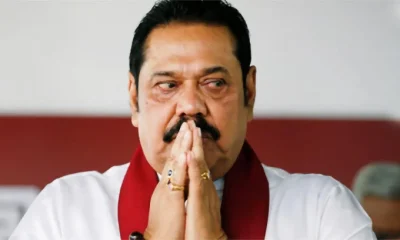
 Features7 days ago
Features7 days agoDon’t betray baiyas who voted you into power for lack of better alternative: a helpful warning to NPP – II
-

 News5 days ago
News5 days agoCommercial High Court orders AASSL to pay Rs 176 mn for unilateral termination of contract
-
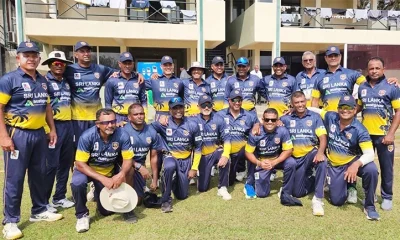
 Sports4 days ago
Sports4 days agoSri Lanka face Australia in Masters World Cup semi-final today
-
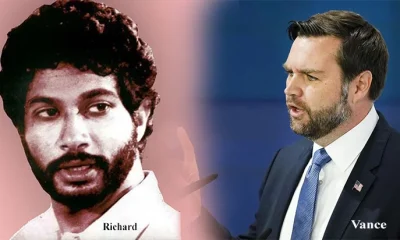
 Features7 days ago
Features7 days agoTwo films and comments
-
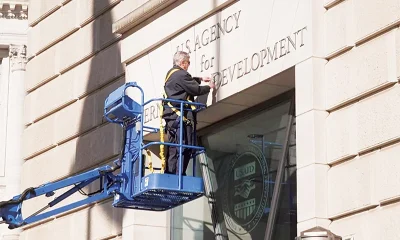
 Features6 days ago
Features6 days agoUSAID and NGOS under siege
-
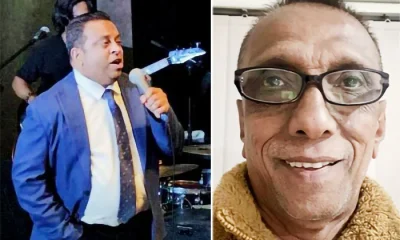
 Features6 days ago
Features6 days agoDoing it in the Philippines…
-

 News4 days ago
News4 days agoCourtroom shooting: Police admit serious security lapses
-

 Midweek Review5 days ago
Midweek Review5 days agoImpact of US policy shift on Sri Lanka


